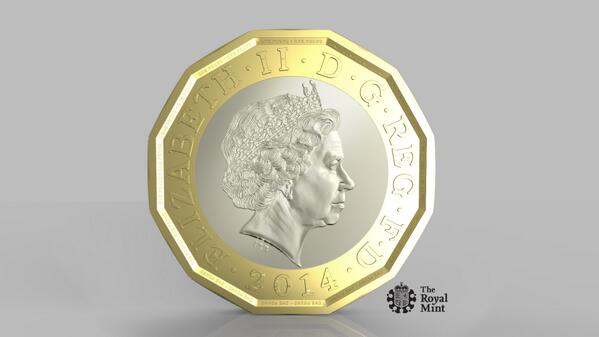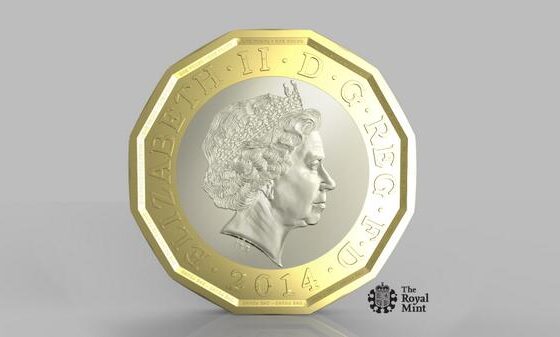

Economy
Budget 2014: new £1 coin revealed
The new-look £1 coin, designed to be the hardest in the world to fake, has been unveiled. Based on the historic three pence piece, it will be introduced in 2017.
Ahead of Wednesday’s Budget, chancellor George Osborne tweeted an image of the £1 coin next to the Budget Box, saying, “Today I will deliver a Budget for a resilient economy – starting with a resilient pound coin.”
The Royal Mint says that the coin’s launch is necessary because the current coin – which has been in circulation for 30 years – is vulnerable to counterfeiting.
The Treasury-owned body estimates that 3% of all existing £1 coins – about 45 million – are forgeries.
“With advances in technology making high value coins like the £1 ever more vulnerable to counterfeiters, it’s vital that we keep several paces ahead of the criminals to maintain the integrity of our currency,” they said.
The new coin is based on the design of the ‘threepenny bit’, a 12-sided coin that was used from 1937 to 1971. However, the new design will use pioneering technology developed by the Mint to make it easier to authenticate and much harder to duplicate.
It is hoped that the move will save taxpayers millions by cutting fraud, though in the short term the changeover may prove costly.
Speaking to BBC Radio 4’s Today programme, the Royal Mint’s director of circulating coin sales Andrew Hill admitted that it is likely that coin-accepting machines across the country – such as parking meters and vending machines – will have to be adapted.
This process would cost the economy around £20 million over the next three years, he said.
“Our role is very important – for now it is to consult with our stakeholder and a major stakeholder is the automatic vending association.
“We have to make sure that, as well as being a secure coin, we look at the impact to industry and make sure that we do everything we can to make the changeover as smooth as possible.”
The replacement of the £1 coin follows the Bank of England’s announcement that plastic banknotes are to be brought into circulation in the UK by 2016.
The polymer notes are also said to be more difficult to counterfeit, more durable and resistant to water.
Further reading:
Budget 2014: Osborne to deliver budget for ‘resilient’ economy
Bank of England says plastic banknotes will be in circulation by 2016
Bank of England: plastic banknotes possible by 2016


 Environment10 months ago
Environment10 months agoAre Polymer Banknotes: an Eco-Friendly Trend or a Groundswell?

 Environment11 months ago
Environment11 months agoEco-Friendly Home Improvements: Top 7 Upgrades for 2025

 Features9 months ago
Features9 months agoEco-Friendly Cryptocurrencies: Sustainable Investment Choices

 Features10 months ago
Features10 months agoEco-Friendly Crypto Traders Must Find the Right Exchange




























